This is what’s happening in my neck of the woods: making maple syrup.
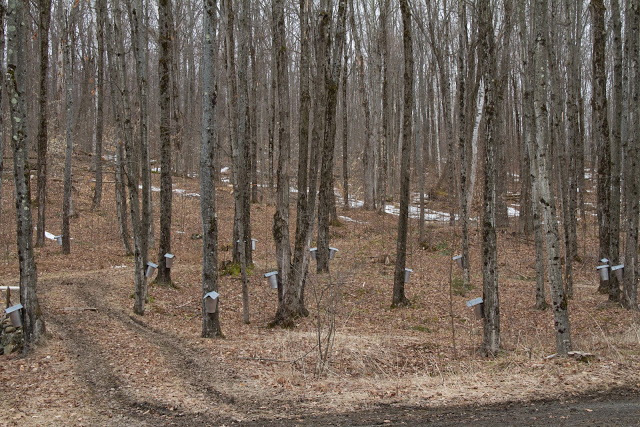 |
| Part of the Sugar Bush at Glen Villa |
We tapped trees in late February and have only now stopped boiling the sap into syrup.
 |
| Steam rises as the sap boils down into syrup. |
It takes 40 litres of sap to make 1 litre of syrup. And to do that, the fire has to be hot.
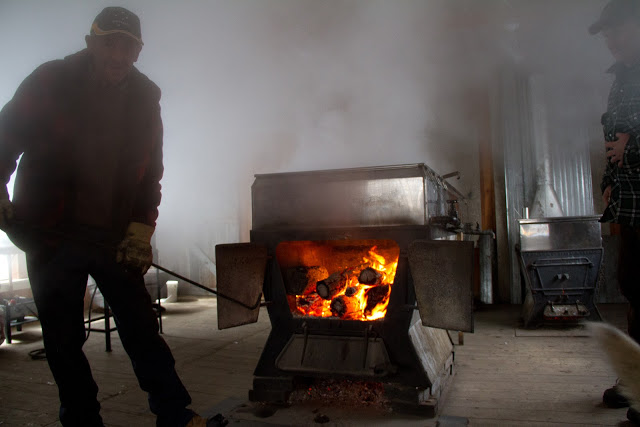 |
| Stoking the fire. |
This year we will use more than three cords of wood. Not a face cord, a real one, which measures 8 ft long by 4 ft wide by 4 ft high. Imagine three times that amount of wood — it’s a lot. We use a mix of soft and hard woods, fallen tree branches and punky stuff that isn’t good for much else. Pine is great — it burns quickly but gives off a lot of heat.
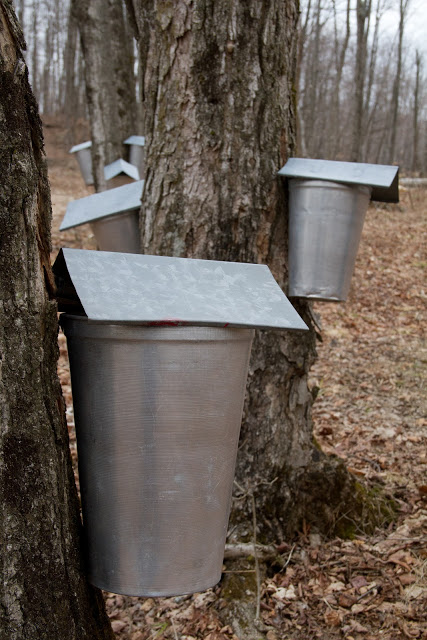 |
| Buckets hang from sugar maple trees. |
No plastic tubing for us: we make syrup the old-fashioned way. This year we tapped about 300 trees and collected about 9000 litres (or 2400 gallons) of sap. Using the ratio of 40/1, that means we’ll produce around 225 litres (or 60 gallons) of syrup.
We can our syrup. Cans stack easily and take up less space than glass jars or plastic containers. Since this year we’ll end up with about 500 cans, each holding 540ml, this is important.
We use a lot of the syrup ourselves, and give a lot to friends and neighbours. We also use it for a great Quebec tradition, a sugaring off. This is a party at the end of the season, when the finished syrup is boiled down to become sugar on snow. The thick syrup is called ‘tire’ in French and it is pure, concentrated sweetness — so sweet that I can eat only a little. Last winter we had visitors from England and Australia. So we held a sugaring off early, to let the kids see what this Canadian tradition is all about.
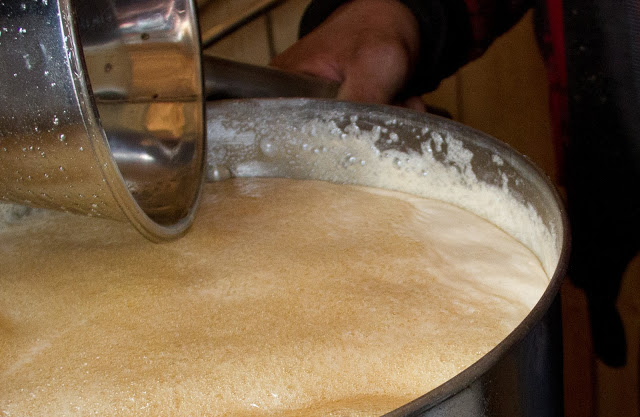 |
| The finished syrup is boiled down even more. |
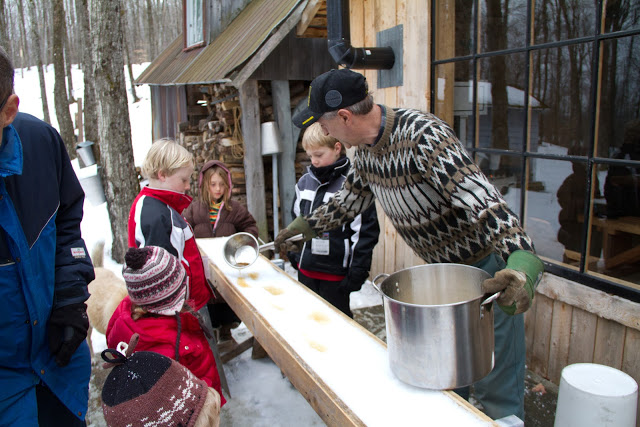 |
| A sugaring off in February, 2012, for friends from abroad. |
When the syrup is thick enough, you pour it onto packed snow. Count to ten while you wait for the tire to harden, then twirl it onto a popsicle stick and suck it like a lollipop. Kids love it. Most adults do, too.
 |
| The best part of a sugaring off: sugar on snow |
But sugaring is not the only thing going on in my neck of the woods. Here in Quebec, it is mud season. As you can see from this road that leads to the sugar camp. You’re lucky not to get stuck. Believe me, that’s no fun.
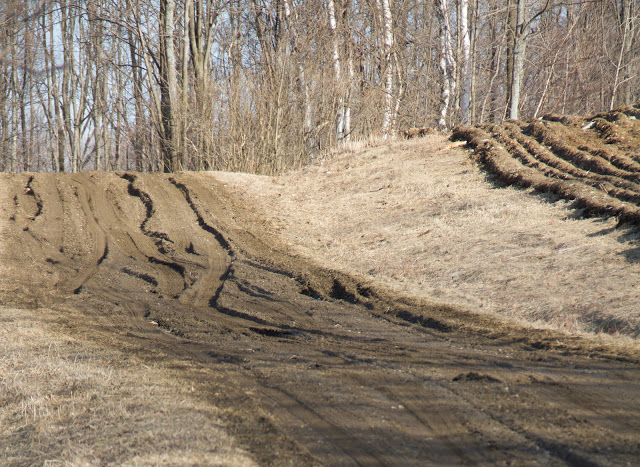 |
| Spring in Quebec is mud season. |
Mud does mean that spring is almost here. The earliest flowers are beginning to appear: snowdrops,
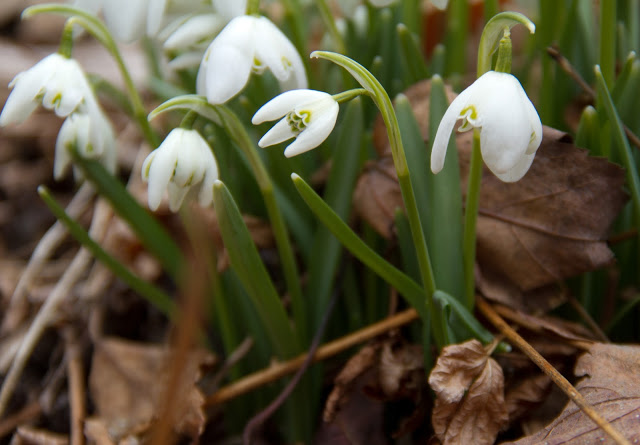 |
| Snowdrops near the front door |
and crocus
 |
| Crocus along the drive |
and the tiny tips of daffodils, just coming through the grass.
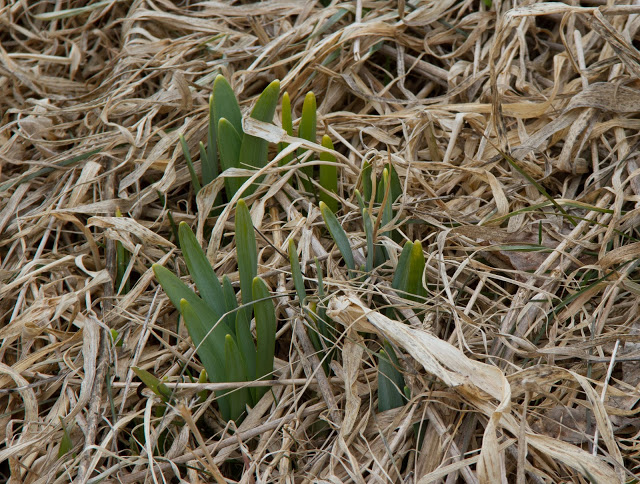 |
| Daffodils coming up on the berm by the skating pond |
Even though officially it is spring, winter is holding on. Ice on the skating pond is still about three inches thick and the snow above the pond has yet to melt, despite some seasonably warm days.
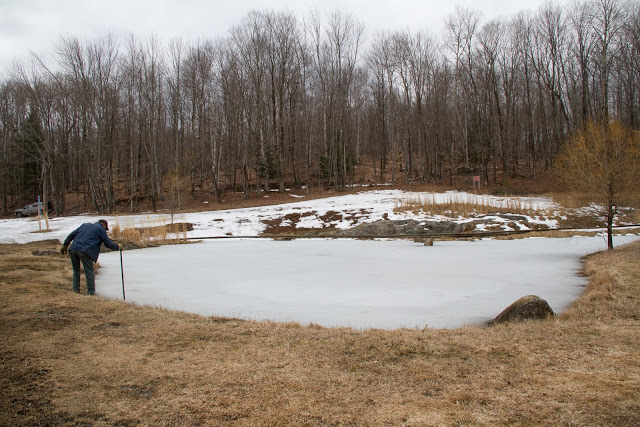 |
| Testing the ice on the skating pond |
The lake is still frozen. In front of the house, the ice is patterned like a crop circle, promising that spring and the summer crops will arrive, eventually.
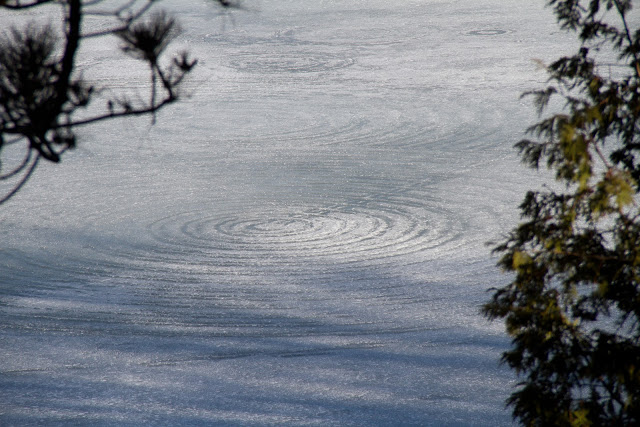 |
| Crop circles in the ice on Lake Massawippi |
The circular pattern shows where an ice fisherman drilled through the ice sometime last month. Or so I think.
That’s what is going on in my part of the world. What’s going on in yours?
And please note: finally (thanks for the help, David!) I figured out how to make it easy for you to reply: just comment in the box below. Please do! Your response needn’t be profound, just let me know you are out there.


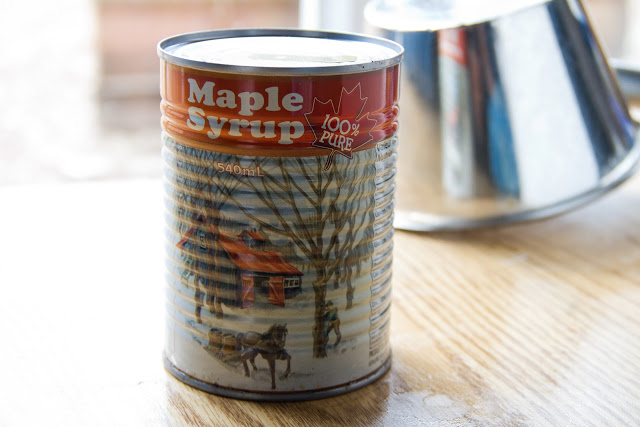

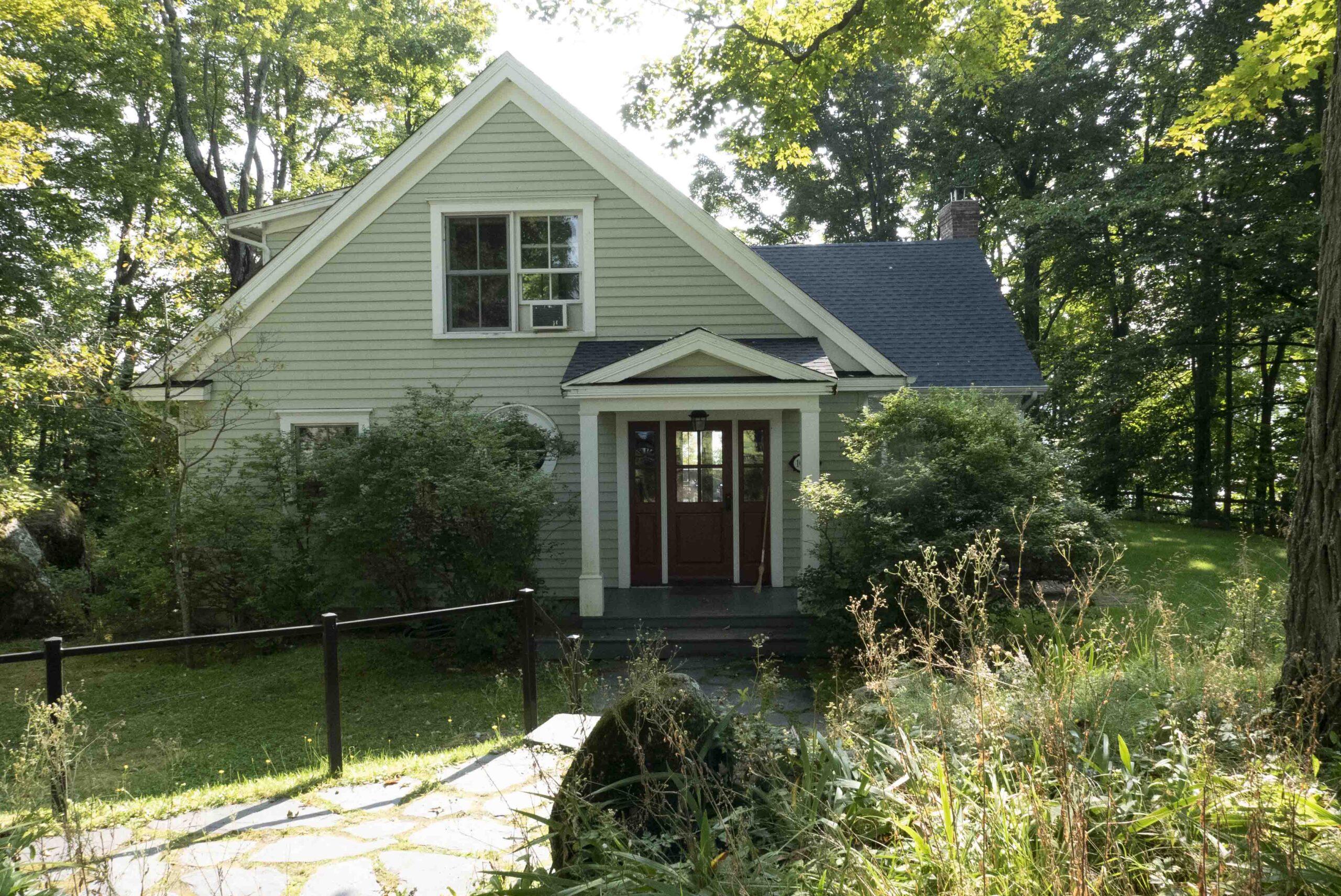

Wonderful blog! My mouth watered as I looked at those blobs of maple candy on the snow. Thanks.
So glad to know you are enjoying the blog, Charlotte. Thanks for letting me know.
No need for thanks – I’ll just take some syrup!
The syrup is yours!
yum-yum!! cheers, Nancie
I think the crop circles are a remnant from the patterns my friend Amy trudged into the snow when I was out there in February with all the knitters….
http://metaphysical-conceit.blogspot.ca/2013/02/knitaversary-in-north-hatley.html
Also: beautiful snowdrops!! They give me hope.
WOW! This is coming along magnificently – Villa D’Estes watch out!
If you are looking for a holiday in sitiges then visit our website: http://www.searchsitges.co.uk. we are the No. 1 Company For planning a holiday in Uk.
sitges rentals & sitges villas
Hi, Pat-
I came across this post googling “mud season in Quebec.” The maple syrup narrative was fascinating — you’re concentrating a lot of it. I just bought another can to bring back to NC with us when we leave (a departure delayed yet again). My hubbie thinks that mud season would be short here (how would we know?) Ha! We have had such a fabulous time in winter, we’re playing around thinking about trying to extend our time here, if it were possible.
Mud season is a good descriptor — not my favourite time of year. Lisa, I re-iterate my invitation to stop by Glen Villa on one of your trips north or south. I’d enjoy meeting you and your husband.
Thanks, Pat! We’ll hopefully not be in a rush on one of our future trips.